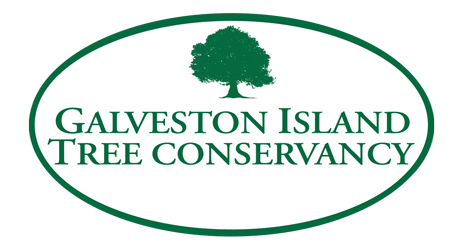Crimson Bottlebrush
Crimson Bottlebrush
By Margaret Canavan
Editor’s note: Hurricane Ike caused the loss of 40,000 trees on Galveston Island. The Galveston Island Tree Conservancy was formed to address that loss and has replaced over 17,000 through grant-funded plantings and giveaways.
For several weeks now you have likely been enjoying showy fuzzy red blossoms on small trees all around the island. These are produced on the Crimson Bottlebrush (Callistemon citrinus), thus named because of its cylindrical, brush-like flowers. The worldwide proliferation of this Australian native began in 1789 when it was first imported into Britain. Specimens have been on the island for years, but numbers have increased recently through the Tree Conservancy’s NeighborWoods program.
Blooms are slightly past their prime now as heavy flowering is normally in early spring. Some summer re-blooming will occasionally occur depending on weather conditions. The “brush” is actually a collection of individual blooms. The obvious parts of the flower masses are stamens, with the pollen at the tip of the filament, and inconspicuous petals.
This tree can handle our challenging coastal environment. Its high salt tolerance and ability to withstand heat, drought, and heavy winds make it a hardy evergreen flowering tree for Galveston. The mature height may reach 15 to 20 feet, with a dense rounded and “weeping” evergreen canopy of narrow leathery leaves.
To get the most beautiful blooms, bottlebrush needs full sun in a well-drained soil. The plants accept a variety of soil types including sandy loam. They may need supplemental moisture during lengthy periods of drought. Trees will grow fairly quickly in our mostly frost-free area.
Bottlebrush is ideal for folks who like to attract wildlife to their gardens. Nectar-loving birds, butterflies and other insects enjoy the showy red blossoms. Flowers are swarmed with bees who know a good thing when they smell it.
While bottlebrush is most often regarded as a decorative landscape and habitat tree, it is claimed to have other useful properties as well. Both the flowers and leaves have been used to make an aromatic tea. There are also reports that you can use the leaves and flowers similar in manner to bay or rosemary leaves for flavoring. One source states that mashed bottlebrush leaves rubbed on the skin can keep away insects and that sprigs and leaves may be used to keep clothes, bedding, and houses bug-free. I have not tested these uses, but leaves do have a eucalyptus-like scent when crushed.
Bottlebrush can be propagated by cuttings or seeds, but if you are like me you might prefer to have your tree more quickly by finding it through a local plant nursery. You can grow it as a shrub with several trunks or prune it to a single trunk to grow it as a small tree. Any unwanted suckers that sprout can be easily removed.
This versatile plant can thrive in containers, as a stand-alone small tree, in a hedge or as a border. It is resistant to most plant diseases and pests. This tree is an excellent as a specimen in the yard, patio or streetside location, guaranteed to get attention from people and wildlife visitors during blooming season. So, if you have a spot for it, plant one now and next spring you’ll have a great show.
———
“Tree Stories” is an ongoing series of articles about island trees, tree care and tree issues. If you have or know of a special tree on Galveston Island that should be highlighted, email treesforgalveston@gmail.com. Margaret Canavan is a Galveston resident, a Galveston County Master Gardener, and a member of the Galveston Island Tree Conservancy Board.


